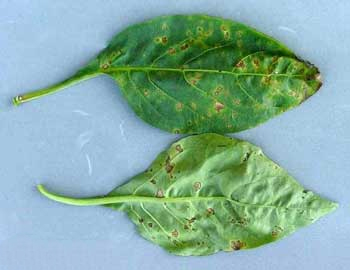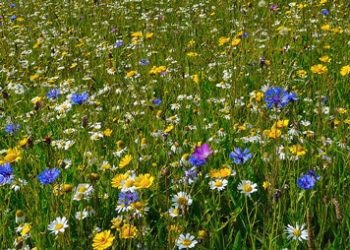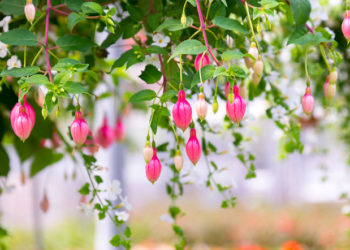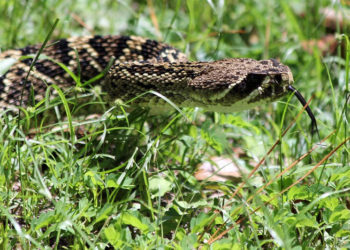Problem: Pepper Plant Leaves Turning Yellow
I bought habanero plants at a local greenhouse and planted them around Memorial Day. They are not looking good. Their leaves are yellow with small holes throughout. There are brown spots around the edges of the leaves and many leaves are falling off. Recently I have been watering them more often because they appear to be burnt up. I’m not sure what to do or what is wrong. Any suggestions? Jessica
Answer: Jessica, I am sorry you are experiencing problems with your peppers. Opting for potted habenero pepper plants over seed is generally an easier way to get them established. But unfortunately it doesn’t rule out growing problems like this one.
Watering Issues
Yellowing leaves on peppers usually denotes a lack of nutrients, such as iron, calcium, sulphur, etc. It can also mean you have an excess of nitrogen, something that can happen with too much watering. It’s hard to tell since under-watering and over-watering generally present similar symptoms. Over-watering will be displayed by lower leaves being the first to turn yellow while the veins are either green or dark brown. Chlorinated water can also cause yellowing of the leaves.
Insect Problems
The holes could be caused by small sucking insects, usually flea beetles or white fly on peppers. You can use an insecticidal soap or Neem Oil on your vegetables at the first sign of infestation. The beetles will only attack the leaves but a large infestation that defoliates the leaves will weaken the plant. If it’s white fly, you will be able to see the little white flies on the underneath side of the leaves. Many insects overwinter in brush surrounding your garden, so it’s best to keep your garden area clear of debris.
Possible Diseases
Other diseases, like bacterial leaf spot, can cause both the pepper plant leaves turning yellow and brown spots on the leaves. There is no cure for this but it can be treated with a fungicide that is labeled for Leaf Spot, it’s best to apply the treatment at the first sign of the disease. The copper will not kill the fungus but it controls the spores from spreading.
Southern blight could also be a culprit. You will see a sudden wilting of the foliage, yellowing of the leaves, then browning of the stems. There can also be a white fungus mat that will appear around the base of the plant.
With any fungal disease, be sure to completely destroy any affected plant matter. Then clean any tools that have been in contact with the affected plants with a bleach solution. If you have a fungal infestation, do not plant any other members of the food nightshade family (tomatoes, potatoes, peppers or eggplants) in the same area the following year. The fungus can remain in the soil and affect these plants the following year.
You can find lots of images online to help you determine which problem is affecting your plants and the best treatment to proceed with.
Weather Issues
Unusual weather patterns have presented many new growing challenges for gardeners. Peppers and most garden plants do best in loose, well-draining soil with thorough watering. Controlling fungus problems means not overwatering, allowing the soil around the plants to dry before watering again, and watering at the soil level without splashing water on the leaves. Allowing water to stand on leaves or in the surrounding area can introduce fungus to your plants. Remove and discard the yellow leaves and do not let them stay on the soil below the plant. Mulch around the plant with straw or other loose material to help keep the soil evenly moist, but do not use something like hardwood mulch, that can dry and become hard, causing the water to run off and not down to the plant.
Apply a good balanced vegetable fertilizer at recommended times to ensure new growth and bloom development. I hope this helps. You can also check out some of our growing tips for habanero peppers.
Good luck with your plants and have a wonderful harvest.
Karen





No Comments